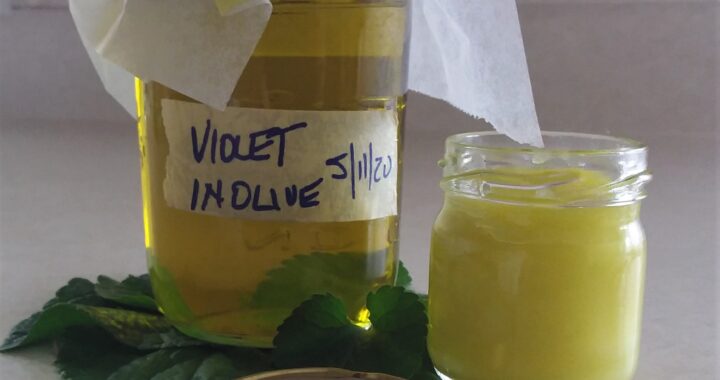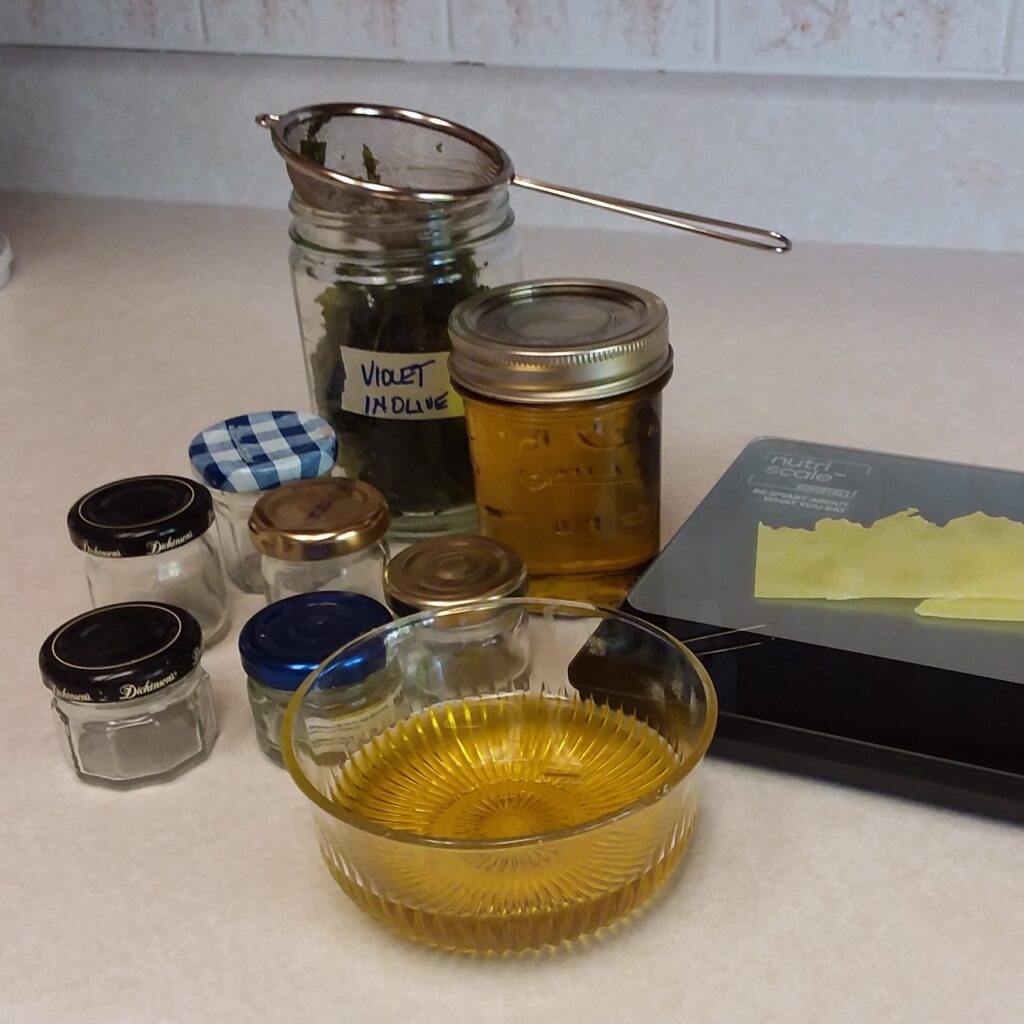Fresh violet blossoms may be a thing of the past for this year but wild violet leaves are another “Gift from the Garden”. Two years ago I dried some leaves and then let them infuse a small jar of avocado oil. The jar disappeared into the back of the “medicine”cupboard and I recently went searching for it, when a friend mentioned her eczema was acting up.
I have no personal experience using wild violet leaf salve but there is anecdotal information all over the internet. Here are a few references https://thenerdyfarmwife.com/violet-leaf-balm-good-for-eczema-fibrocystic-breasts/ and https://www.motherearthliving.com/health-and-wellness/herb-infused-oils-and-salves-with-plantain-and-violet-leaf/.
To make the infused oil all you need are violet leaves and oil. Begin by harvesting from a pesticide free location, no need for any extra chemicals. Place the leaves on a dry towel and give any little creatures, 30 minutes or so to leave the leaves and start exploring the paper towel. Return them outside and then rinse the leaves and leave to dry off and dry out. A dehydrator is another option but I just left them on a cookie rack until they crackled.
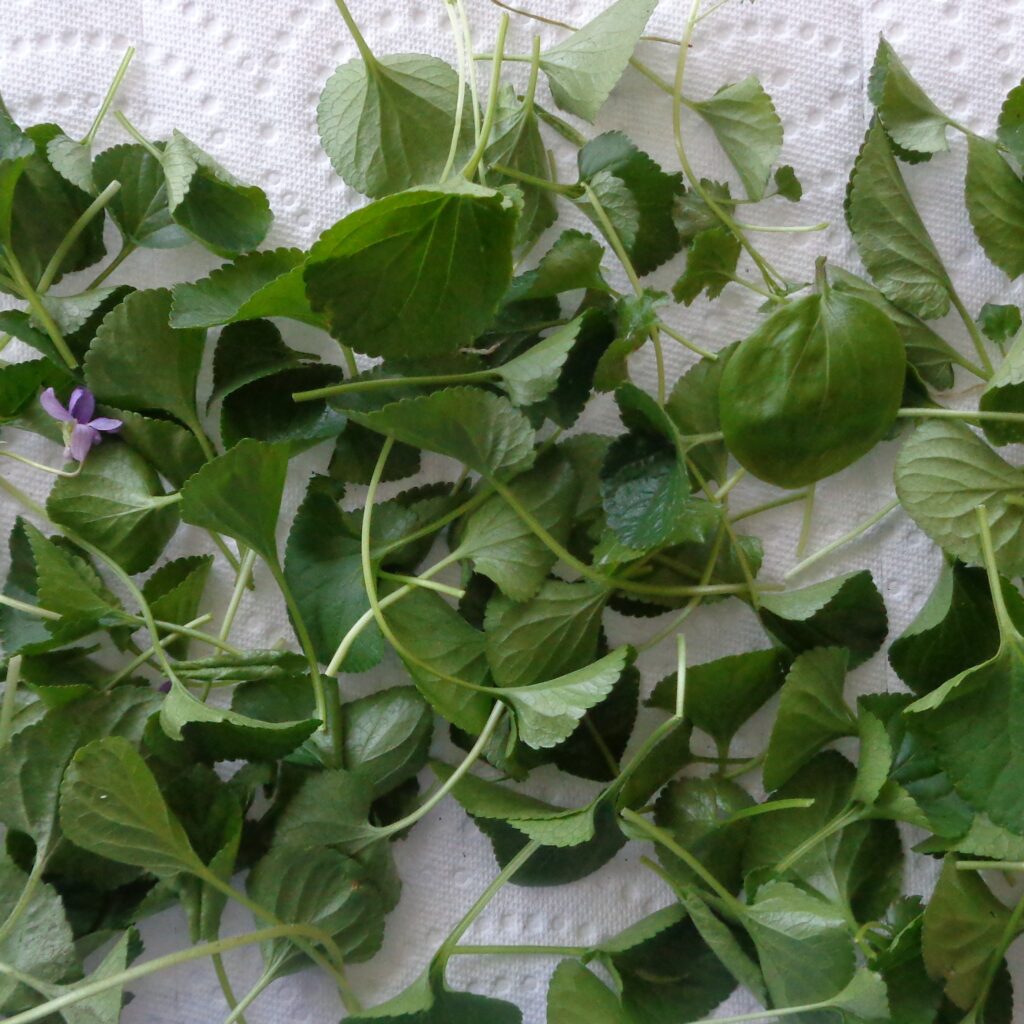 I have seen directions that use fresh and dried violet leaves. If you want to use yours fresh, give them 12 hours to wilt before adding the oil.
I have seen directions that use fresh and dried violet leaves. If you want to use yours fresh, give them 12 hours to wilt before adding the oil.
The purpose behind infusing dried leaves as opposed to fresh, is to protect against any bacterial contamination in the water in the leaves. Fresh infusions are best for things that are going to be used the same day and not stored for a longer time. In this case I let the leaves dry and then covered them in a avocado oil, allowing them to infuse in a cool, dark location (for much longer than needed).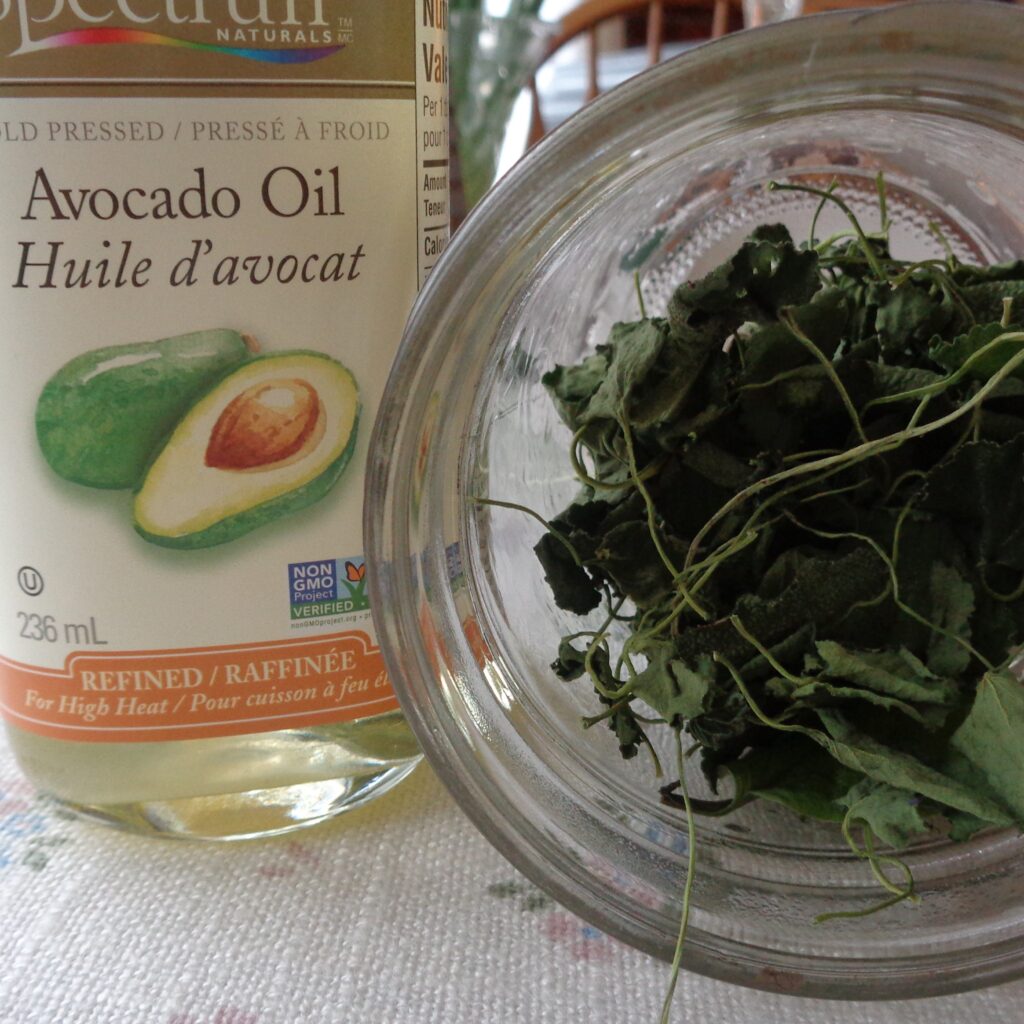 When your oil is ready, transfer to a clean jar through a sieve, lined with paper towel if you are seeing too many bits get through with the oil. The leaves were large enough, in this case, and after a good drip (give them 30 minutes at least, to get every last drop of infused oil), I was left with a full 1 cup jar and enough to make up a batch of salve for my friend.
When your oil is ready, transfer to a clean jar through a sieve, lined with paper towel if you are seeing too many bits get through with the oil. The leaves were large enough, in this case, and after a good drip (give them 30 minutes at least, to get every last drop of infused oil), I was left with a full 1 cup jar and enough to make up a batch of salve for my friend.
In this particular case I used little glass jam jars as that was what was available. A better choice would be something that does not let the light in but there were no more metal tins in the house and she lives on an island where a different friend was going to visit, the next day. Using the small jars lets most of the salve be kept in the dark, with only the jar in use being exposed more regularly and then returned to the medicine cabinet.
4 oz. infused oil
1/2 oz. beeswax
But let’s talk about that for a moment as I hope you will be making lots of salve and lotions in the future for yourself, friends and family. Changing these values can help you adjust the consistency of the cooled salve. More oil or less beeswax will make a lighter finished product while more wax or less oil combines to a thicker, firmer salve. Make small adjustments after your first batch so you can feel the differences once cooled. The heat from your hands will also help the salve soften when applied to your skin so check that as well before making modifications.
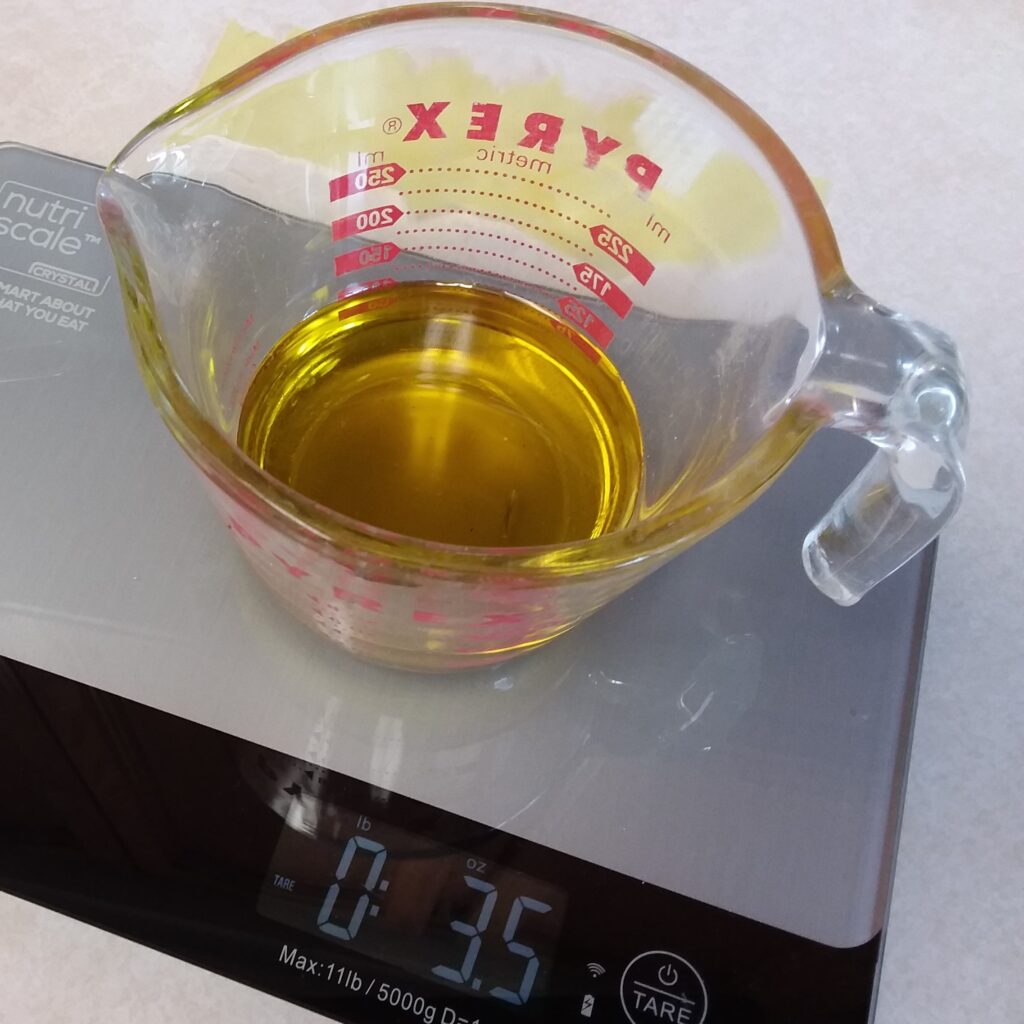 I had 3.5 oz of wild violet infused oil and used just under .5 oz. beeswax for this batch.
I had 3.5 oz of wild violet infused oil and used just under .5 oz. beeswax for this batch.
When making salves and lotions with beeswax, the wax needs to be melted so it can be combined with the oil. The melt range for beeswax of 144 to 147 degrees F. or 62 to 64 degrees C., heat the infused oil doesn’t need. For that reason I take a small amount of the infused oil and place the beeswax in it to be melted. I generally use honeycomb beeswax sheets, torn into little pieces as it can be heated for the shortest length of time. Avoid big clumps of beeswax as that will only require longer heating times.
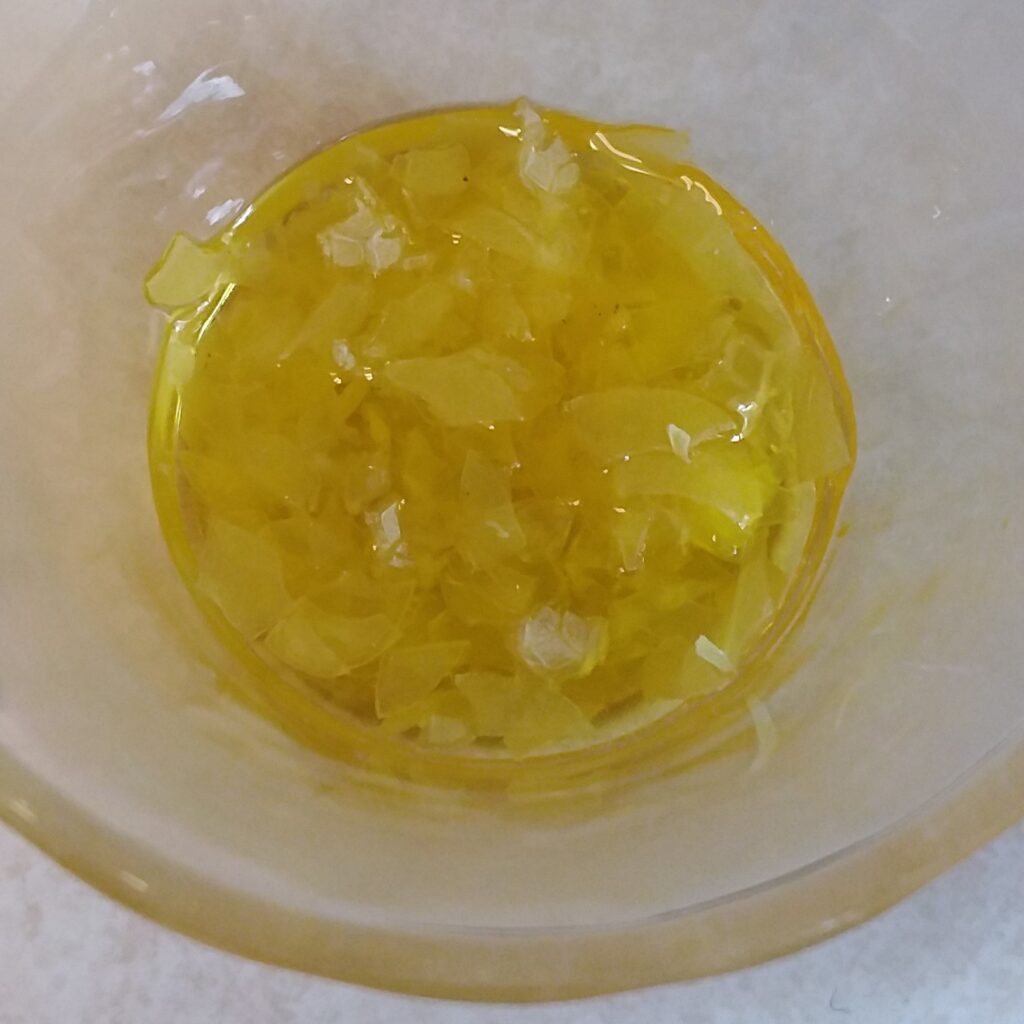 Once the beeswax is melted, combine it with the remaining infused oil that has been gently warmed but not as hot as the beeswax. Stir well to combine properly and pour into containers.
Once the beeswax is melted, combine it with the remaining infused oil that has been gently warmed but not as hot as the beeswax. Stir well to combine properly and pour into containers.
Sometimes, if there is too much of a temperature difference between the infused oil and the melted beeswax mixture, combining the two liquids can cause the wax to solidify. DON”T PANIC. It is all good. Just gently reheat the entire mixture but only until it has remelted then stir and pour.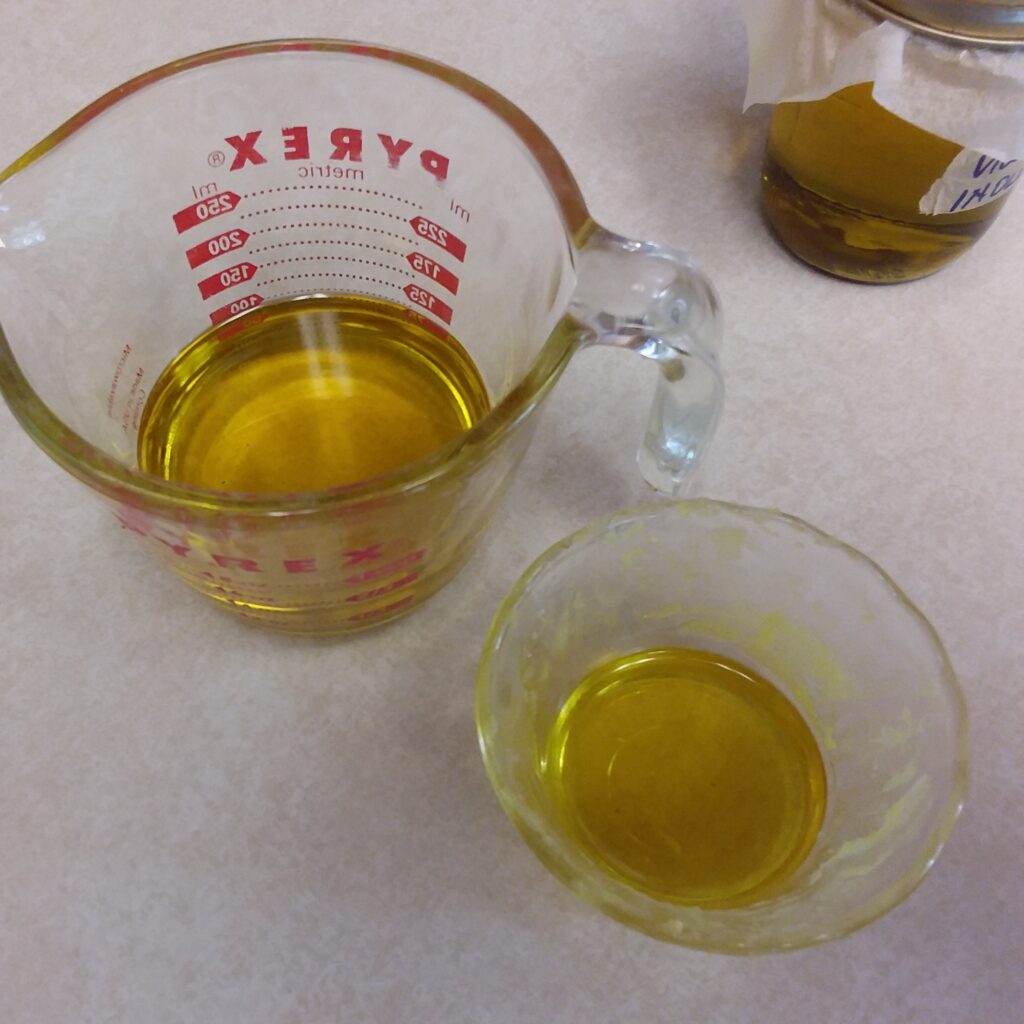
You can see in the picture below of the cooling salve, that not all the filled jars have flat tops. That is because the mixture was cooling quickly and getting thick. They may not be pretty but they are definitely useable (there goes my Canadian spelling again).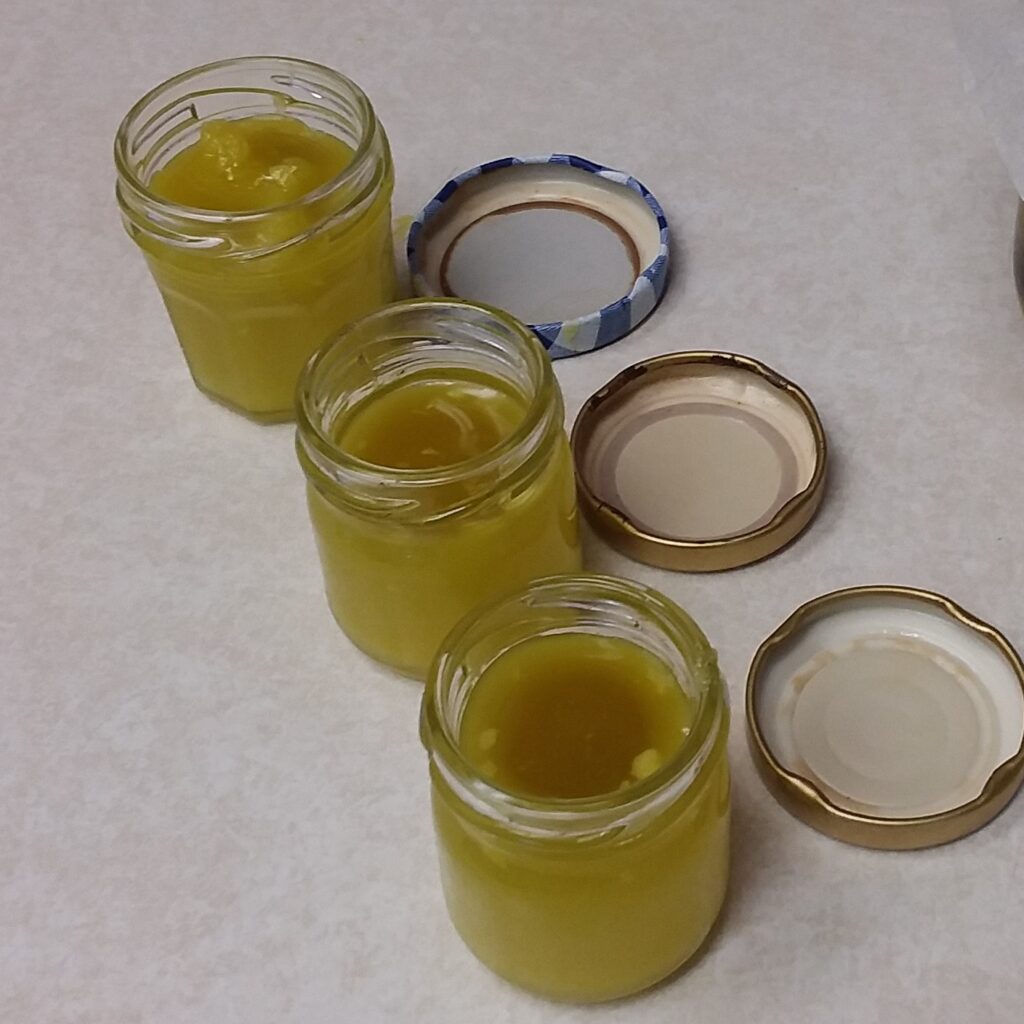 A couple of extra tidbits: There is a layer of parchment paper between the metal lid and the oil to keep chemical reactions to a minimum.
A couple of extra tidbits: There is a layer of parchment paper between the metal lid and the oil to keep chemical reactions to a minimum.
Always label your oils so that you know what is in the jar and how long you have had it. Two years is not optimum. It would have been better to have used the oil within a year. I am planning on infusing the oil again with some plantain and then making salve.
This is a basic technique that can be used for creating a simple infusion. The infused oils can also be used for soap making and lotions if that suits your plans better.
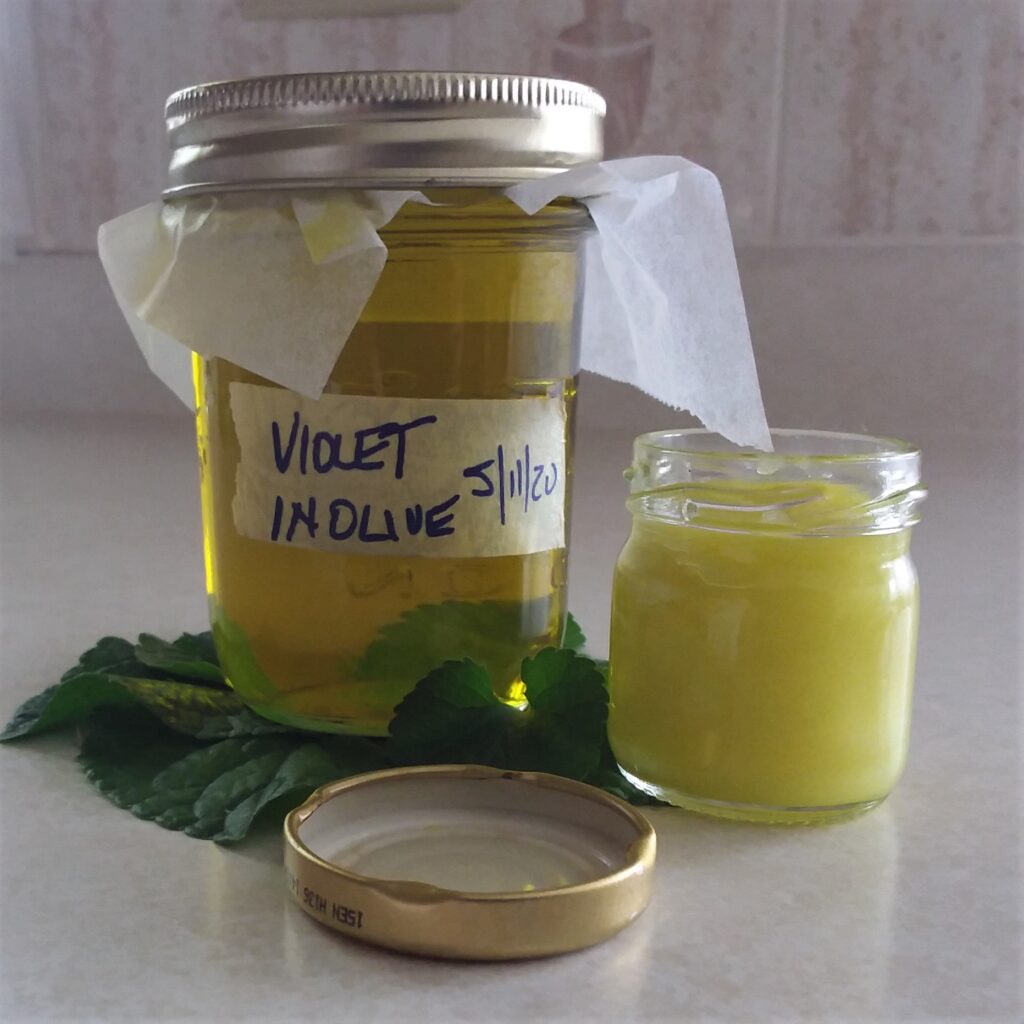 Violet Leaf Salve from My Kitchen Wand
Violet Leaf Salve from My Kitchen Wand

